The "Juon" series
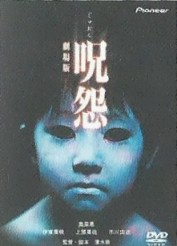
Directed by Takashi Shimizu / 2003 / Geneon Entertainment
It's set in a normal place in Japan that could be just about anywhere, where weird things are constantly happening. The way it's so thoroughly normal, and the clinging fear that lurks beneath the surface - the way it connects you intimately like a neighbour was influential. (Takahashi)

The Texas Chain Saw Massacre

Directed by Tobe Hooper / 1974
This is a film about a group of youths from out of town who are chased around a house by a bloodthirsty killer with a chainsaw. The flowing long shots and dry worldview make it feel like you're watching a documentary film. When we were coming up with the image of the Shibito, their appearance, traits and if these things would be scary, and when we were wondering if Hanuda - the place where the Shibito live - would have scary scenery and atmosphere, I remembered this film. (Takahashi)

Haikyo no Arukikata (Walking the Ruins)
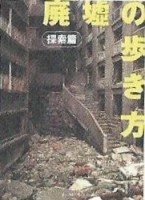
Tohru Kurihara / East Press
This guide-like book introduces a variety of ruins and abandoned villages in Japan. This book was what alerted me to the existence of the "ruins" genre, and I actually went to some for research. Buildings that have been abandoned as relics from the past, crumbling over many long years - creating this special kind of thing using CG was one of the challenges. "I cried at the ruins" is a line by Tohru Kurihara, ruin investigator and the book's editor, which I found left an impression on me, and I used it for reference as a theme when dealing with ruins. (Takahashi)

Fly, Fly My Sadness
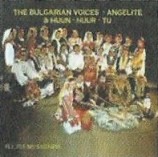
The Bulgarian Voices - Angelite & Huun-Huur-Tu
This is a strange collab album between Huun-Huur-Tu, a group representative of Tuvan Khoomii, and a Bulgarian chorus. This is something Kusakabe brought when we were discussing the BGM for the cutscenes. At first I listened mainly to the Bulgarian chorus, but the Khoomii kargyraa (particularly the emphasis on the low notes, and the raspy voice) fitted better, which led to us using that. (Azuma)

Instrumentals
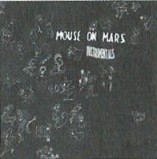
Mouse On Mars
We'd decided right from the start that for sound we were going to use a lot of background noise, so I used this for reference as something that, though you would expect it to loop for a long time, wouldn't get too irritating. It's an experimental work by a very famous German electronic group, and still easy to listen to. (Azuma)

Perception/Bliss Out v.4
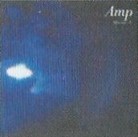
Amp
Issued in 1997, part of darla's BLISS OUT series. There are no rhythms or melodies, just a relentless drone, like the drip drop of rain. (Azuma)

Directed by Takashi Shimizu / 2003 / Geneon Entertainment
It's set in a normal place in Japan that could be just about anywhere, where weird things are constantly happening. The way it's so thoroughly normal, and the clinging fear that lurks beneath the surface - the way it connects you intimately like a neighbour was influential. (Takahashi)

The Texas Chain Saw Massacre

Directed by Tobe Hooper / 1974
This is a film about a group of youths from out of town who are chased around a house by a bloodthirsty killer with a chainsaw. The flowing long shots and dry worldview make it feel like you're watching a documentary film. When we were coming up with the image of the Shibito, their appearance, traits and if these things would be scary, and when we were wondering if Hanuda - the place where the Shibito live - would have scary scenery and atmosphere, I remembered this film. (Takahashi)

Haikyo no Arukikata (Walking the Ruins)

Tohru Kurihara / East Press
This guide-like book introduces a variety of ruins and abandoned villages in Japan. This book was what alerted me to the existence of the "ruins" genre, and I actually went to some for research. Buildings that have been abandoned as relics from the past, crumbling over many long years - creating this special kind of thing using CG was one of the challenges. "I cried at the ruins" is a line by Tohru Kurihara, ruin investigator and the book's editor, which I found left an impression on me, and I used it for reference as a theme when dealing with ruins. (Takahashi)

Fly, Fly My Sadness

The Bulgarian Voices - Angelite & Huun-Huur-Tu
This is a strange collab album between Huun-Huur-Tu, a group representative of Tuvan Khoomii, and a Bulgarian chorus. This is something Kusakabe brought when we were discussing the BGM for the cutscenes. At first I listened mainly to the Bulgarian chorus, but the Khoomii kargyraa (particularly the emphasis on the low notes, and the raspy voice) fitted better, which led to us using that. (Azuma)

Instrumentals

Mouse On Mars
We'd decided right from the start that for sound we were going to use a lot of background noise, so I used this for reference as something that, though you would expect it to loop for a long time, wouldn't get too irritating. It's an experimental work by a very famous German electronic group, and still easy to listen to. (Azuma)

Perception/Bliss Out v.4

Amp
Issued in 1997, part of darla's BLISS OUT series. There are no rhythms or melodies, just a relentless drone, like the drip drop of rain. (Azuma)

English Translation by Chelsea

